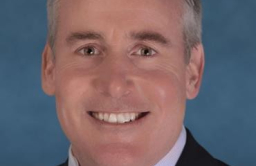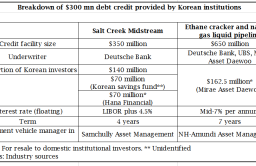-
KOSPI 2593.67 -31.91 -1.21%
-
KOSDAQ 717.67 -5.95 -0.82%
-
KOSPI200 344.80 -4.58 -1.31%
-
USD/KRW 1387 5.00 -0.36%
Energy transition investment needs flexible approach: Ares Management
LPs should understand changes in sustainable infrastructure and how forward-looking managers are, says Ares' Andrew Pike
By
Oct 28, 2022 (Gmt+09:00)

As energy transition is a new sector in infrastructure compared with other asset types, institutional investors are seeking asset managers highly experienced in the sector.
In the evaluation of general partners, understanding previous changes in energy transitions and a flexible approach to portfolio management are important, said Andrew Pike, Partner and Co-Head of Ares Infrastructure Opportunities.
Limited partners also should understand a manager’s experience across financial cycles and the broader energy markets, to understand how energy transition works and how it permeates the green economy, Pike said.
Based in Los Angeles, Ares Management Corp. is a leading global alternative investment manager across credit, private equity, real estate and infrastructure. The infrastructure opportunities team is the firm’s climate and sustainable infrastructure arm.
The following is a transcript of The Korea Economic Daily's email interview with Pike on Oct. 27.
"At its foundation, climate infrastructure, or sustainable infrastructure, is based on assets and companies that provide essential services that are environmentally friendly and are underpinned by assets with stable cash flow.
Climate infrastructure is driving the energy transition and has been supported largely by what we call 'price, policy and preference,' with price representing the biggest change over the last 10 years.
However, consumer preference has aided in accelerating the pace of adoption and deployment and, to an extent, led to the broadening of climate infrastructure opportunities as demand to decarbonize has increased materially within the last several years.
While policy has remained a propellent, the real success has been driven by overall awareness of climate urgency and the opportunities private investors have to make meaningful changes in how and where we invest."
▲ Do you see energy transition as a rising trend that emerged several to ten years ago? How has it changed during the past years?
"Interestingly, while many think of the energy transition as a recent phenomenon, it has been happening for over 30 years. What makes it different today is the expansion beyond just the power sector and into all facets of our economy, effectively the energy transition is really the evolution into a 'green' economy.
It is this broadening of the energy transition that is so different than any other point in time. We believe this broadening is led by the thesis that climate infrastructure is integral to the efficient consumption and utilization of our collective finite resources, as well as our ability to more greatly rely on our abundant and clean energy sources."

▲ How has sustainable infrastructure evolved and where does it go from here?
"Ten years ago, the opportunity set would have been limited to power generation. Today, sustainability extends into the entire economy, including controlled environment agriculture, transportation, digital and green fuel production.
A number of years ago, we transitioned our power and infrastructure investment focus away from natural gas generation and to climate infrastructure. Initially that focus was on wind and solar, as well as energy efficiency and even storage.
As we have navigated the energy transition, being early investors in a number of climate sectors, we expanded our mandate and embraced a broader definition of climate infrastructure, including a range of sectors that share two themes: sustainability and proven technology as critical pillars.
With this foundation, we have seen the expansion of the opportunity set across climate resiliency and resource efficiency including water, controlled environment agriculture and green hydrogen, all of which we see as offering alternatives at the asset and project level.
More recently, we are seeing a rapid expansion of capital required to build out digital infrastructure, which is critical to our daily way of life and an enormous consumer of energy. As such, digital infrastructure requires a sustainable investment lens to ensure efficiency optimization is at the forefront of design and operations.
As we look forward, investment managers have been thought leaders in this circular economy as well to help drive solutions-based approaches to critical environmental challenges such as waste management and recycling."
▲ With the influx of capital focused on energy transition and climate, what should LPs look for in an infrastructure manager?
"The energy transition requires a dynamic strategy with a flexible approach. While the opportunity could look favorable today, the energy transition, by definition, will be different in five years, so it is important that LPs understand how forward-looking the manager is or is not, as the case may be.
Further, we believe LPs should understand a manager’s experience across financial cycles and, in our view, across the broader energy markets to really understand the industry, how it fundamentally works and how it permeates the green economy.
As we said before, the energy transition has been occurring over several decades, and we have already experienced several transitions. Understanding that kind of change, we believe flexibility is critical to managing the opportunity set as it evolves, which is one of the most important components of portfolio management.
Many investors today may have experienced limited to the last decade of investing through a bull market. The Ares team has experience investing through cycles, has seen commodity fluctuation, recession, inflation and interest rate movement, and understands how these macro events will impact the market.
Discipline is also incredibly important. There is a constant and growing influx of transactions to evaluate. To share one statistic, we have reviewed at least one deal per day for the last two years. We believe the job of a good investor is to be patient and disciplined to find the best management teams, companies and assets in a given climate sector and be able to grow the relationship through repeat deal flow."
▲ How have limited partners' attitudes changed toward the energy transition?
"Definitions have evolved the most. Ten years ago, LPs were focused on traditional infrastructure with large, capital-intensive projects like midstream assets, natural gas power projects, ports and toll roads. The definition was fairly stagnant and somewhat limited in scope.
The energy transition expanded the types of sectors that met a similar definition: assets that benefit from contracted and stable cash flows, provide essential services, demonstrate limited correlation to the broader market and can offer an inflation hedge, which is especially important in today’s environment.
Today, LPs have evolved alongside their managers. Their appetite for assets and companies driving the energy transition is thriving. The traditional infrastructure thesis still has strong merits and acts as a foundation for what we do, but we have had to broaden our definition to capture the full potential that climate infrastructure offers.
In addition, the silver lining of the pandemic – and more recently the global energy shock – is that climate infrastructure demonstrated its merits, and the focus on sustainability and resiliency has increased significantly.
LPs are building more sophisticated infrastructure portfolios with defined allocations across core, core-plus and value-add for sector specialists and for international mandates, which is a notable change compared to 15 years ago."
Write to Jihyun Kim at snowy@hankyung.com
Jennifer Nicholson-Breen edited this article.
-
 Industrial real estateAres Management sees rental demand-led growth in US properties
Industrial real estateAres Management sees rental demand-led growth in US propertiesOct 21, 2021 (Gmt+09:00)
-
Oct 12, 2018 (Gmt+09:00)
-
Aug 04, 2018 (Gmt+09:00)
-
Jan 30, 2017 (Gmt+09:00)





